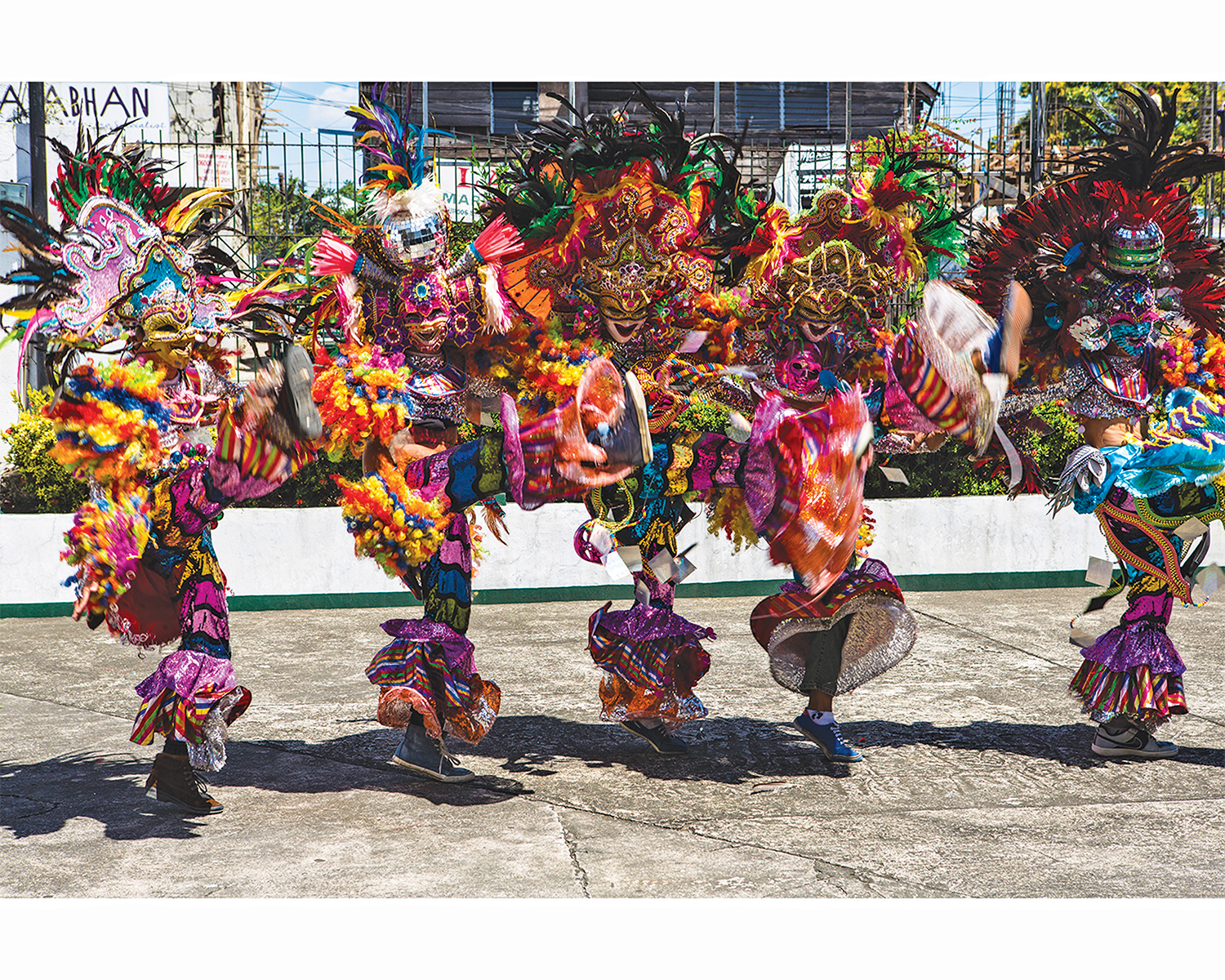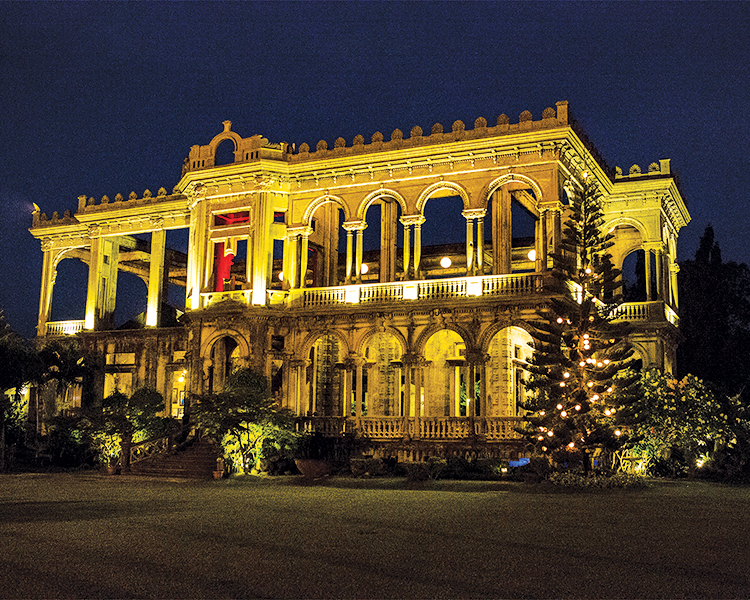By KRISTEL DACUMOS-LAGORZA
Bacolod never runs out of ideas, events or faces — as many as the masks that adorn downtown Bacolod during the Masskara Festival every October. To many, Bacolod is the city of smiles, the sugar capital of the nation and the destination of the epic festival Masskara. But to its true-blooded Negrenses, it’s a place where the fun never stops and where food is so good – it’s actually a destination!
(Photography by MAU AGUASIN)Â
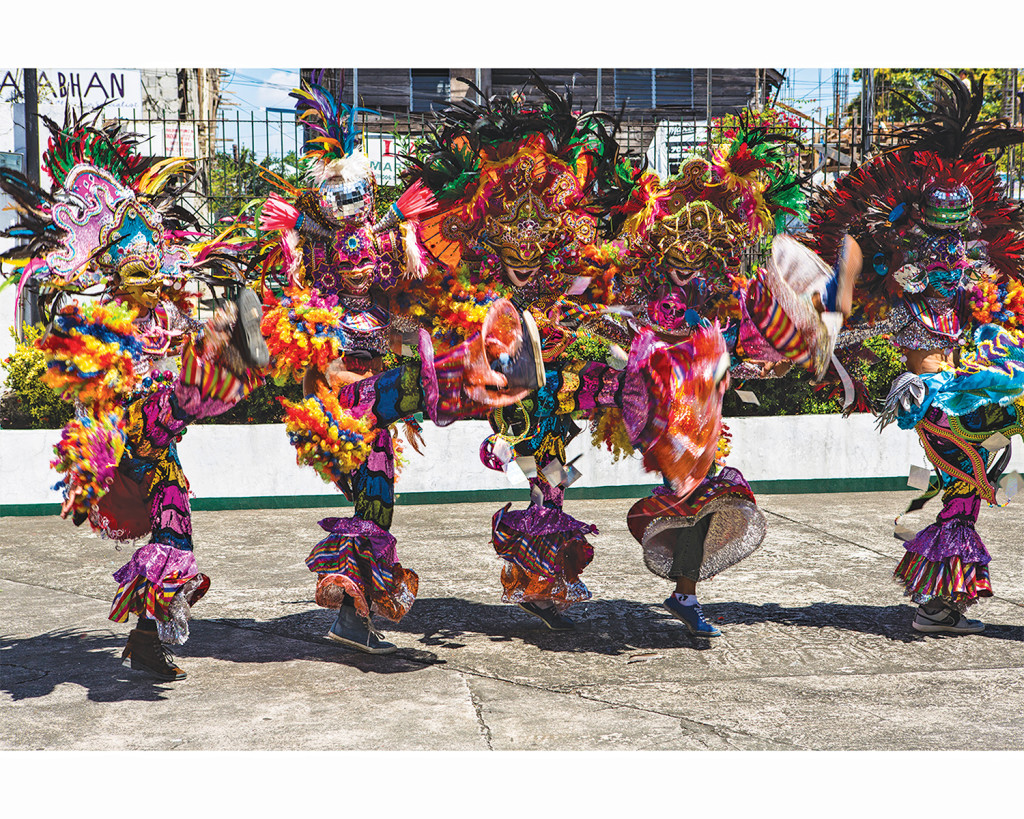
(Lively dancers at the Masskara festival)
Leisure lure
One minute, Bacolod gently folds you into the embrace of the soft, rhythmic flow of provincial life. Life is smooth, relaxed and undisturbed, as evoked by the soft rolling hills and never-ending sugarcane plantations that one sees on your way from the Bacolod-Silay airport to downtown. In another minute, it furiously shakes you awake with the maddening pulse of the Masskara Festival and the Bacolaodiat Festival.
Whether it’s the unhurried lifestyle, the booming festivals, events and delicacies that lure you in, “more than anything, people come here because what we give you is more precious — time,†says then mayor Monico Puentevella.
True enough, everything is a short drive; the longest drive would probably take some 30 minutes. Without hours wasted in traffic, you have the time to do the things you really want to do.
“While it is the Sugar Capital of the Philippines, Bacolod is also the gateway to adventure,†he continues. “Everything is just minutes away from anything. Mount Kanlaon is for mountain trekking, Bantug Lake Ranch is for polo and horseback riding, while Sipalay Beach (which is the quieter version of Boracay) is for diving.
“Run to your heart’s content in any direction and enjoy the picturesque views. On a Sunday, people go to cockfights. If you’d like to cure your arthritis and relax your body, go to Mambukal Resort, the best natural spa in the world!â€Â The previous mayor shared that he is a regular visitor at Mambukal, renowned for its sulfuric hot springs, which lie beside refreshing pools of ice-cold water from the seven falls.
“Another reason people come — and some have decided to stay — in Bacolod is the fact that we have the freshest produce and the best pastries. Of course, the prices not only give you value for your money; they are downright cheap!†he chuckles.
From the renowned and often imitated, but never duplicated, original Chicken Inasal and La Paz Batchoy to napoleones, piaya and tarts, one cannot have enough of each. Everyone is bound to discover their favorite Bacolod delicacy.
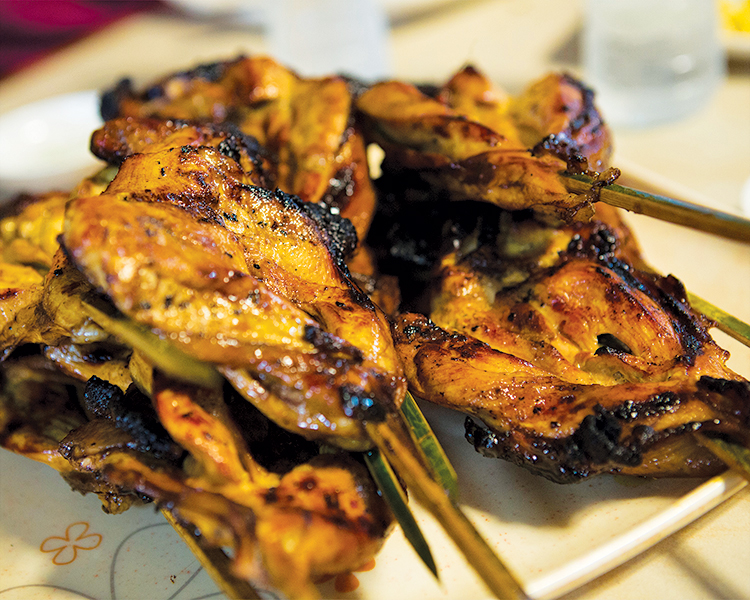
(A serving of original Chicken Inasal)
Lifestyle of the Rich and Famous
Despite its sweet foundations, Bacolod is rooted in an even spicier history.
Here are some of the city’s most breathtaking ancestral homes, whose great founding sugar baron owners in the 18th and 19th centuries lend an aristocratic touch.
The Dizon-Ramos Museum
Inaugurated on Aug 15. 2007, the Dizon-Ramos Museum houses an eclectic mix of the Dizon-Ramos family’s collections. From glass Murano pieces of sculpture, paintings of horses and well-loved trophies to childhood toys, religious memorabilia and other interesting knickknacks, the collections reflect the unique personalities as well as the interests of Raymundo Dizon, Mermelinda Ramos and their children Munding, Ermy, Rudy, Ray, Ging, Roly and Patching. The museum also gives appreciation to one of Bacolod’s most prominent families, as well as holds the special distinction of being the first in Asia to curate a Holy Land Gallery.
The Dizon-Ramos Museum is located at 42 Burgos St., Bacolod City and is open daily from 10 a.m. to 5 p.m.
Balay Negrense
Built in 1897, the two-story home served as the abode of the influential sugar baron Don Victor Gaston. Don Victor, his wife and 12 children lived a lavish lifestyle befitting of sugar royalty. Unfortunately, after Gaston’s death in 1927, the mansion was left to the elements, abandoned and unused. It was in the early ‘90s that the Negros Cultural Foundation acquired the edifice from the legitimate heirs and lovingly restored the ancestral home to its original splendor.
Check out Balay Negrense at Barangay III, Cinco De Noviembre St., Dakbanwa Sang Silay 6116. It is open from Tuesday to Sunday, 10 a.m. to 5 p.m.
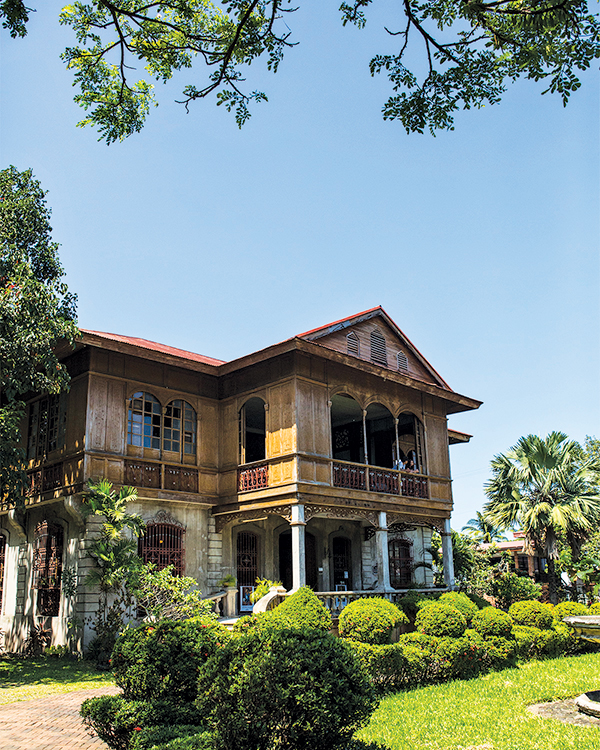
(Balay Negrense)
Balay ni Tana Dicang
While men ruled the boardroom everywhere else in the world, it was the powerful matriarch Enrica Labayen Alunan (a.k.a Tana Dicang) who ruled Talisay, Negros Occidental. Tana Dicang married sugar planter Efigenio Treyes Lizares in 1872 and lived a life of plenty, amassing hectares of sugarcane plantations. Upon her husband’s death, the matriarch assumed the role of head of the family and successfully maneuvered the family business through tumultuous times.
Thanks to Adjie Lizares, the curator and one of the great grandchildren of Tana Dicang, the home has become a well-preserved cultural gem that remains faithful to how it looked almost a century ago.
Do not pass up an opportunity to tour this ancestral home with a guide, as he can narrate all the juicy secrets of the Lizares family, as well as shed light to the stories behind the secret passageways and peepholes of the massive mansion.
Balay ni Tana Dicang is located at 36 Rizal St., Talisay City and is open everyday from 9:30 a.m. to 5 p.m.
The Ruins
Dubbed as the “Taj Mahal of the Philippines,†the ancestral home of Don Mariano Ledesma Lacson (more popularly known as The Ruins) is a 903-sq. m. structure, built during the early 1900s by Don Mariano for his first wife Maria Braga. It was said to be the biggest and most beautiful example of Neo-Roman architecture, fitted with the finest China and furniture from Europe and Asia. But when a Japanese spy, who worked undercover as the family’s gardener, updated the Japanese forces during World War II, the family decided that they would rather have their home burned down than have it as the next headquarters of the enemy. Because it was so well built, it took two days to burn down the roof and its two-inch wooden floors.
The Ruins is located is open daily from 8:30 a.m. to 8:30 p.m.
(The Ruins at nighttime)

